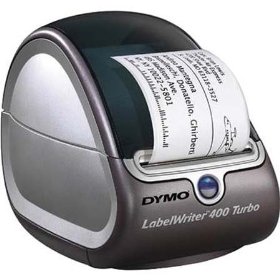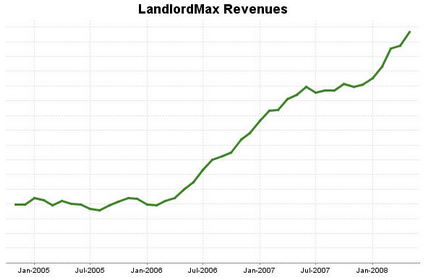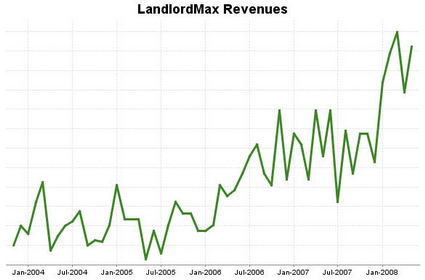Be Careful Where You Buy Your Software

Every once in a while we get someone contacting us asking why they haven’t received their license. In most cases it’s because the spam filters have somehow blocked the email or have sent it in the spam folder and they just missed it. In either of these cases it’s a very easy fix, especially if the email is still in their junk folder (which it usually is). However once in a while it turns out the person tried to buy the software from another website (completely unsanctioned by us) at a very significant discount. And I don’t just mean 10%-20%, I mean up to 70%-80%. Nice discount isn’t it? Maybe a little too nice…
Unfortunately it’s not too nice. In these fairly rare cases it’s from fake websites trying to illegal process credit cards with no intentions on fulfilling the orders. It’s all a fake storefront to just get people to buy whatever (in this it’s software but it could be anything, shoes, tv’s, you name it). As soon as the money is processed, you won’t ever hear from them again. Within a month or so more, the website/domain is completely gone and has moved to another domain/website. I don’t know how they get away from credit card chargebacks and such, but they somehow seem to. And I don’t even want to think what they do with the credit card information!
Now I can understand falling prey to a scam, especially if the price is within a small percentage (say a 10%-25% discount). Even 50% is not unheard of if you’ve been dealing with the site for a long time and/or it has a good reputation. But when a site that you don’t know (the domains have generally been purchased within less than a few months so there’s no way you can know it), that has no SSL certificate (they often state it’s a secure connection on the webpage when it’s completely bogus), and the discount is more than most liquidation sales, doesn’t that make you wonder? Wouldn’t you at least contact the company first to make sure it was legit?
The worse part, at least for us, is that a few of these people who contact us after the fact expect to get a license because they “paid” for the software. Yes I agree they paid something, but it was nowhere near the price and not to us. It’s the same as if you tried to buy a Rolex watch for $100 from a random site and wondered why it was a scam. Then contacting Rolex and demanding that you get a real Rolex watch since you already paid for it. It just doesn’t work that way.
The good news is that we’re generally very accomadating to these people, probably more so than we should be. That is assuming they are courteous and respectful (after all we aren’t the ones that scammed them and we didn’t try to get a riduculous discount). For example, today I was in communication with a gentleman because he was scammed in exactly this way. Because he was so courteous and nice, we helped him out as best we could. Had he been abbrasive and demanding, odds are very high I would given him the Rolex example above and ended it right there. Common courtesy can get you further than you might expect. Remember, we aren’t the ones to blame in this situation. If you buy a Rolex from a street vendor in a shaddy part of town for $100, don’t be surprised if you get taken.
So if you see a version of LandlordMax (especially an OEM version because there is no such thing) selling for a fraction of the real price, RUN!!! RUN AWAY! And it’s not just us, it’s almost every other software out there. If a software (or any other product for that matter) is discounted by more than 50% of it’s normal price and it’s coming from a site you don’t know, RUN! RUN AWAY! If it’s too good to be true, then it probably is too good to be true.
Permalink to this article Discussions (6)
Sometimes Simple Things Aren't So Simple
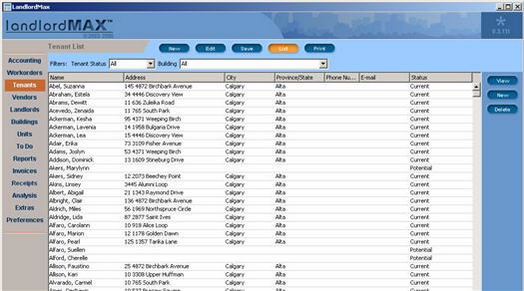
As some of you already know, we’re working very hard to release a new version of LandlordMax Property Management Software in the near future (within weeks hopefully). As you’d expect, you’ll find lots of new and exciting features.
However not all features we wanted to include will make it into this version. For example, we tried to squeeze in a feature to give you the ability to “archive” older data. To give an example, let’s say you have a tenant “John Smith” that’s moved out some time ago, you might not want to see his name appear in the drop down list of tenants anymore. At the same time, you don’t want to delete him because a lot of older data is associated to him (such as all his rents, etc.). Therefore what we came up with is the ability to archive data such as tenants.
Seems simple doesn’t it? Should be easy. But it’s not as simple as it first appears. At least not if you want to keep your software easy to use!
Although I promise I’ll try to keep it as un-technical as I can, I’ll need to be a little technical to explain why it looks so easy at first glance. The obvious changes are that we need to add a property to the tenant to mark it as archived (in both the database and the code). Next we need to add the ability to mark a tenant as archived within the screen with a simple checkbox. Nothing too complex yet. But that’s where the simplicity ends.
You’re probably asking yourself how can it become complex from here. Really, all we have is a checkbox to mark an item as archived. If it’s archived, don’t include it in the list. Simple. Not so. Firstly, in your main list of tenants, do you display both archived and non-archived tenants? If you say just display non-archived tenants you’d be wrong. Before I give you the answer why this won’t work, ask yourself how do you edit an archived tenant if you only list non-archived tenants?
Aha! You can’t! Therefore you have to give your users the ability to see both. But then if you do, you defeat the purpose of having the ability to archive tenants. Well the solution we came up with is to include an additional filter at the top of the list. This way you can see all tenants, or only non-archived tenants. By default you’d of course show all tenants because not everyone will know there are filters when they start to use the software. And if you’re smart, you save the filter settings so that the user doesn’t have to reset it each time they go back to the list view.
That wasn’t so difficult. Of course if it ended there I wouldn’t be writting this would I. The next issue we have to deal with is what happens if someone tries to archive data that shouldn’t be archived. For example what happens if they try to archive a tenant that’s currently living in an apartment? Do you let them? Probably not. So now you have to create rules as to who can be archived and who can’t. Is it as simple as just allowing tenant’s that aren’t currently living in a unit? It would be nice if it was, but it’s not. It’s possible that a tenant has a lease to a unit that they’re not living in (a parking spot, a parent leasing for their child while away at college, etc.). So you can’t assume this. But for now, let’s assume you can ignore all this and just not let a user archive a tenant that’s currently in a unit (we’ll deal with the other issues later).
Have we solved all the issues? No, not yet. In our software we offer a dropdown (combobox) list of tenants on the other data entry screens. So for example, on the workorder screen you can select a tenant from a drop down list for that workorder. This makes life easier as all the tenant’s info is associated with the workorder (for reporting, printing, etc.). By doing this, we’ve just solved the issue of keeping the list of tenants to only relevant tenants (ie non-archived tenants). This is great.
But what about reports? How can we generate reports on archived tenants? Based on our current solution it’s not possible. For a user to generate a report on an archived tenant, they’d first have to un-archive that tenant, generate the report, and then re-archive them. Not very user friendly is it? And if we didn’t care about making life easier for our customers we could do just that. But of course we care, so that’s not an option. This means therefore that we have to alter all the reports that let you select a tenant to give you the option of listing all tenants or all non-archived tenants. Nothing too major, but we also have a lot of reports.
We’re still not done. What data do we use on our reports? On some reports we want to use archived tenants and on others we don’t want to use archived tenants. For example, on the reports that list all accounting entries or cashflow, we want to show all accounting entries regardless of whether or not the tenant is archived. However, when we display a list of tenants, we may or may not want to include archived tenants (another option the user needs to select). The same is true for reports on security deposits, leases, etc. So we need a way to toggle whether or not to include archived tenants.
What about reports grouped by tenant? Again same issue, we need a way to ask the user if they want to include archived tenants or not. Is just asking whether or not to include archived tenants enough? Unfortunately it’s not. Within some reports included in LandlordMax you have the ability to include a date range. For example, you can generate a rent roll report between any start and end date. You can generate a list of leases that will expire within a start and end date. Why am I mentioning this here? Isn’t it just as simple as including the option to include archived tenants or not? No. Well, yes, technically we could ignore this and just leave the responsibility to the user to deal with their own issues.
What do I mean? If someone selects to only display non-archived data isn’t that what they really want? Maybe not. Let’s say I want to generate a report that will list all “Accounting entries grouped by tenant” for last year. What do you think will happen? I might be missing half my data because half my tenants are archived. What about for the year 2001? Odds are pretty high that many tenants would be missing. Do we just ignore this use case and let the user deal with it. Never mind the support requests we may get from people complaining that many of their tenants are missing, especially since the data would appear on reports such as “All accounting entries”.
Assuming you’re still here and reading through this longer post, you can now appreciate how sometimes a simple feature can quickly escalate into a larger and more complex feature. In our case, we were hoping to squeeze in this feature for the next major release but I’ve had to make the decision to push it off. If we don’t, we have to address all of these issues. Well maybe we don’t, but if we want to maintain that we’re the easiest we definitely need to. At least I can’t knowingly release software with these glaring issues incomplete.
I can understand releasing software that’s fully working but missing some features (all software is like that, we can always add more features). For example offering the ability to send emails within the software but not offering a spellchecker is not that terrible (don’t worry we’re going to offer a spellchecker in the next major release). Your users can still send emails, they just can’t spell check. It’s not fun, but it works as expected. However releasing a feature that can allow your users to go into an unstable state (archive tenants that are currently renting your unit) or cause unexpected results is not good. Even if the software is behaving as it should, if the behavior isn’t what people expect there’s an issue.
And because of all this, the ability to archive tenants and other data has been pushed off. Especially when you consider the cost to benefit. The benefit of this feature is that the user doesn’t have to scroll through a longer (sometimes much longer) list of tenants that are no longer relevant. Yes it would be great to shorten this list, and I agree with the people who requested it, it is a much needed feature. But at this time the costs are too high and we’re too close to our release date. These are the hard decisions that no one wants to make but that must be made.
PS: If you ever wanted to know why software is sometimes delayed, this is a perfect example. This is a feature that seemed simple at first inspection but wasn’t. Actually even after some thought it still didn’t seem that complex. It wasn’t until we really started to implement it that we understood the issues and the full scope. And nor could we, how could you know ahead of time. In retrospect it’s easy, but think back to when you first started reading this post. Did you even have the faintest idea of what was coming up?
Permalink to this article Discussions (1)
Business Idea: Specialized Check Printer
Like I’ve said before, ideas are a dime a dozen. What it really takes to make a business is more than just an idea, it takes the execution of the idea. And this is by far the hardest part. I myself have no trouble coming up with new ideas. I actually have lots of them. The problem is that I can’t execute all of them. I just don’t have the time and the resources. So today I’m going to share with you my latest idea. And please go ahead and take it if you want. I’d love to see this product make it to the market! I’d buy it in a heartbeat.
Basically the idea comes down to a simple need, the ability to print checks from my computer. Right now in the market there are many great label printers, which is awesome. We use Dymo label printers here at LandlordMax to help us (it’s great for mailing labels amongst other things). It’s an amazing time saver. As good as having sheets of Avery mailing labels are, I often just need to print one label, of even just a few labels and not an entire sheet of labels. Hence I almost exclusively use the label printer (I actually only use the Avery sheets to print large quantities of return mailing addresses).
Now imagine if there was a printer just like the Dymo label printer, but for checks! How cool would that be?
There’s some details that would need to be ironed out. For example what do you get with a roll of checks? Does it print out your account information on the bottom of the check or just fill in the fields like the date, payee, etc. That’s the 99% perspiration part, I’m just giving the 1% inspiration.
The key to this printer’s success of course is to make it very easy to use and integrate with. If there was such a printer, and it was very easy to interface/integrate with, we’d almost certainly be supporting it as the primary check printing option for LandlordMax.
You see right now for a software to offer check printing, which we’re in the process of implementing for LandlordMax, you either need to jump through hoops or highly limit the capabilities of your check printing feature.
It basically comes down to a couple of options. The first is to support only pre-defined formats, but this means you’ll also have to sell checks “compatible” with your software. Not exactly where we want to go for LandlordMax. The alternative is to create some form of a “check designer” which allows you to configure how the checks are printed. Of course this option is much more complex for the software company to implement, and hence costs more. But not only that, most users aren’t really interested in configuring their printer alignments just to be able to print checks.
So there you go, a business idea that will solve a common and annoying problem faced by both consumers and businesses. Just think of the possibilities. Hopefully someone will take this idea and run with it!
And if you know of a check printer like this that already exists, please let me know. I’d be very appreciative.
Permalink to this article Discussions (10)
Penny Wise Pound Foolish
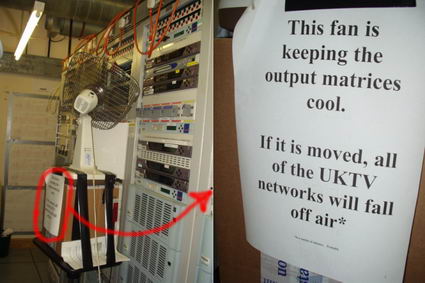
For those of you who aren’t familiar with this expression, it means to be cautious (wise) with small amounts of money but wasteful (foolish) with larger amounts of money. Does it happen often? Absolutely! I have no doubt it happens in every field and speciality, but it still amazes me just how often it happens in the IT industry.
The catalyst to this post was the recent Sophisticated Cooling Apparatus post on The Daily WTF. The picture alone says a thousand words! As you see from the picture, you have a hardware setup worth thousands, tens of thousands. Not only that, but those machines had to be configured and setup which costs time and money. And I suspect they’re also running a lot of expensive custom software.
What’s truly amazing is that the biggest failure point is a $5 used fan that’s attached with a note to not remove or unplug it because the whole system will collapse. Huh?!? A massive system with large resources (not just hardware and software, but also people) is at the mercy of a basic cheap fan! It makes no sense at all.
Which lead me to search for other examples, and it didn’t take me long at all to find many other examples. It just so happens that The Daily WTF had another article rightly entitled Penny-Wise, Pound-Foolish. And that story was even more appropriate!
In it, a bank hires a $300/hour contractor to setup monitoring software to analyze traffic on $5,000,000 worth of servers. Obviously you’d think they want to get their money’s worth from the contractor, especially at that hourly rate. You’d definitely want to give him a great computer system to work with. You’d want to completely pave the way so that he can work as efficiently as possible. Or so you would think…
Unfortunately that’s not what happened. The person got assigned a completely under-performing system that could barely run Microsoft Office! Never mind actually writing any code. So here you have someone who’s at the mercy of an obsolete computer that can barely even function. What a waste of time! Considering that a newer machine could be had for under $2000, that’s less than the consultant’s daily cost. And remember, in this scenario most of his time is sitting there waiting for the computer to just respond to a command (it had 256MB of ram – not even enough to run Windows XP).
The consultant of course complained, asking for a more powerful box. He was of course denied. He got the all too common response of “let’s make due with what we have for now”. And he’s not the only one to experience this. I’ve known many developers who’ve brought in their own hardware (including myself). This is hardware they paid for themselves! It happens too often.
And by the way the above story is even worse than my summary, but I think you get the point.
So why does it happen? And especially why does it happen so often? Because in larger companies and governments it’s all about budgets. More specifically whose budgets. For example the cost of the upgraded computer for our lowly consultant would probably be coming from another budget, one where they didn’t want to spend their money on something that didn’t give them a direct ROI. There’s no bigger picture here. It’s not like at a small startup where every penny is highly valued. It doesn’t make sense, but unfortunately that’s how the game is played.
Another possibility is the process to acquire the upgraded computer. Often in big bureaucracies it’s easier to acquire new people, even very highly paid consultants, than it is to acquire simple and cheap hardware. I’ve personally seen it many times, and I’ve heard about it even more. I remember at one time spending almost the same amount of money debating the value of getting more advanced hardware as the hardware itself cost. And it was no ones fault, that’s just how it works.
And that’s why you end up with a contractor basically being paid to sit for $300/hour. The larger bureaucracies can absorb this cost because of their size.
However all is not lost. I have a simple solution to propose. Let’s assume that not everyone is an idiot required to fill in ID-10-T forms for every little request. Let’s assume people for the most part are good and want to do a good job. Let’s TRUST people.
Instead of requiring a large process to get a computer upgrade, purchase a smaller software application, etc., let’s assume they know what they’re doing and let them do it. Give them a discretionary budget to spend on things that will make their jobs more efficient. Let them maximize their performance.
Sure some people will abuse the system, but that’s nothing compared to the state we’re in now. Using the example of the $300/hour consultant, it would take a lot, and I mean a LOT of abuse to outweigh the benefits this type of trust system would give you. Even if the consultant decided to purchase a $10k computer, the company would still be ahead!
But it gets better. Remember that for each request sent out, it has to get the approval of several people. Even that $50 stick of ram needs to be approved by several people. And a process had to be put into place. In other words, getting the approval to purchase $50 of ram probably costs a LOT MORE than the $50 stick of ram. I’d bet it easily costs over $200.
Which means that if you compare the trust system to the current system, you could technically have 4 people completely abusing the system for every real request and still come out ahead! And I don’t believe for even an instance that 400% of the requests are from people trying to abuse the system.
But wait, it doesn’t end there, you also get another great benefit. If you trust people they will be more productive. Not only are you saving money, you’ll get better results. People who are trusted are more motivated. When you have a good team that gels well together, they can do great things. If you embody distrust and bureaucracy, well things come to a crawl and any and all motivation slowly dwindles to nothingness.
Trust your people. The results might surprise you.
Permalink to this article Discussions (0)
How To Quickly Setup a Software Development Environment
At one time or another all software developers have joined a project or team where the development was already underway. The most common introduction for a new developer to these projects is to setup their development environment. If you’re extremely lucky, a lot of this work is already done within the corporate disk image, but more often than not it’s up to you. This is especially true if you’re a contractor.
For a typical Java project, the story goes something like this. Download and install a specific JDK (Java Development Kit). Download and install a particular IDE like Eclipse. Download and install a specific web server. By the way, depending on the company, some of these versions may no longer be available which means you have to track down someone who still has an available copy somewhere. But assuming they’re all the latest versions, that’s just the start.
Once that’s done, you have the core applications to setup. Then you get to start downloading and installing the support applications. If you’re using Eclipse, maybe it’s the SVN (Subversion) subclipse plugin or the TortoiseSVN client. A good text editor such as UltraEdit. FireFox. The list goes on for about a dozen or so applications.
After that you probably need to configure your system settings. Most likely you then have to set up some development environment variables or configurations (server.xml, eclipse.ini, etc.). Save some connection settings in Putty. Setup some network drive connections. And on it goes.
But the fun doesn’t stop there! At this point you’ve just got your environment setup, you haven’t downloaded the project’s source code. Now you need to checkout the project from the source. Once that’s done you need to run the automated build system to get the project up and ready on your box, perhaps using Ant or Maven. If you’re lucky, and the company was in the upper technological echelon it ends there. Unfortunately most companies don’t completely automated their builds so you often still need to do some extra manual tweaking to get your project running. And on it continues.
Which means that all new developers lose anywhere from a few hours to several days setting up and configuring their development environments. Very expensive! And the longer your project goes (there will be some developer turnover with time) and the bigger your team gets, the more expensive it gets. Plus, with time this knowledge will disappear. People will forget steps, or why things are done in a certain way. Which means that at some point setting up a new project will be, well, for lack of better word, insanely difficult. You’ll have to track down specific people within the project because they’re the only ones left who know anything about certain parts of the system. If you’re really unlucky, the only way to get up and running might be to you copy the complete environment from one computer to the other. Yes complete copies of directories! It can become a mess.
The good news is that there’s a much much better alternative. One that will make everyone’s life much easier, and keep the knowledge over time. Can it really be? Yes, we don’t all have to suffer through this. And what’s even better is that I’ve implemented what I’m about to suggest with great success several times, and not just at LandlordMax but also at companies I’ve consulted for in the past.
Create a developer’s installer!
Why should your final product be the only system with a deployment strategy? Why not create one for your developer environment as well. Especially if your company doesn’t have a fully pre-prepared disk image ready with everything (which is virtually guaranteed).
How hard is this to do? It’s actually extremely simple, simpler than you might think. If you’re company already owns an installer like Install4J (which I’ve recommend in the past), then it’s a matter of an hour of someone’s time. And it shouldn’t just be kept on someone’s machine, it should be it’s own full project within your version control system. This way if any developer does any environment change, it’s up to them to update the developer installer project. This includes if an application needs to get updated (for example to the latest version of Eclipse, the latest version of FireFox, etc.). This isn’t just limited to new software updated, but also configuration changes, etc. No longer do you need to keep a record of configuration change emails, it’s all done for you in the developer installer!
Therefore when a new developer starts, all you have to do is get the latest executable build, copy it on a USB key (network drive, whatever), and let them run it. Better yet, you can do it the day before they come if they’re going to use in-house hardware. During this time you can walk them around and introduce them to the rest of the people they’ll be working with, explain them the project in more detail, or any other higher value action items you may have.
And don’t worry if your company hasn’t bought a great installer building tool like Install4J, you can also use the open source installer creation system called NSIS. Up until LandlordMax, I generally relied on NSIS to create Developer Installers since I could never guarantee what was available in the different development environments, but with LandlordMax we use Install4J. Both are great, the main difference is that with NSIS it will take you a lot longer and you’ll need to acquire a lot of specific NSIS knowledge (it’s a scripting language). So instead of an hour or so for Install4J, expect it to take a few days to a week or more with NSIS to build a good installer. But even if it takes a week, it’s worth it!!! The good news is that it doesn’t have to be production quality, just beta quality. In other words, you don’t have to include all the checks like in a production installer, you can assume that your users are pretty smart and will mostly enter in valid values (for example you can assume there’s enough disk space on the hard disk, that it exists, that’s writable, and so on).
The good news is that an NSIS installer script shouldn’t be more than a few dozen lines to a couple hundred lines (assuming you’re using functions and macros available on their website). So that’s not too bad overall. With Install4J it’s all GUI based, and the resulting script is stored in an xml file which can be called from any Ant build script! The cost to benefit ratio for one person to translate all the developer environment knowledge into an automated installer for everyone that will be available forever is unbeatable!!
A few quick tips:
- Don’t re-create your main build file (Ant or Maven in Java), leverage what’s already there. In other words, you developer installer can call the main build file in your project to complete the environment setuo.
- Use silent installers. Most applications have silent install options, so use them. The less interaction your developer installer requires the better.
- Give the developer the option of selecting the initial install location.
- As part of the install, leave all the individual installers within the main install directory (for example leave the FireFox setup executable somewhere in the install path so that it can be run separately later).
- Give the option to select which “modules” to install. For example give the option to install FireFox, to install Eclipse, to configure the server.xml configuration file, etc. I’ve done this in the past by presenting a list of options (checkboxes) the user could select. By default all are selected with a toggle to unselect all of them near the bottom.
- Assume advanced users are using your installer. In other words, you don’t need to spend too much time on checking for user errors. Let it fail miserably if there’s an error. It’s not worth the time.
As an added benefits, everyone has the same development environment initially by default. With time some developers will deviate from the standard development environment to what they like, but it’s good to start the same way. At least this way you have a default method to setup a developer environment which is a million times better than having a bunch of different developers setting up your environment in slightly different and unique ways. Plus if there’s an issue, it’s REPRODUCIBLE!
Permalink to this article Discussions (6)
LandlordMax Customer Testimonial
“I’ve loaded LandlordMax and played around a bit, and just want to tell you that you are now my hero.
I wanted to get it going a little bit so I knew how to teach our property manager. Hands down, this is the easiest and most uncomplicated property management program I’ve ever seen – especially for us, since we are a small property.
I’ll definitely let you know if I can’t figure something out, but wow, this is wonderfully user-friendly.
Big thumbs up, and thank you!”
Permalink to this article Discussions (0)
LandlordMax Customer Testimonial
Nothing makes my day like getting very positive feedback from LandlordMax’ers (people using LandlordMax). Here’s one I recently received from Heather Borquez that I just had to share:
“I love the program! And the update! Keep ’em coming. I am very happy with your program and I run 20 units on this software and find it fantastic. It is easy to keep my receipts and accounting in order with this program. Keep up the good work.”
Thanks Heather, it’s great to hear that Landlord’s property management software is really working for you!
Permalink to this article Discussions (0)
LandlordMax Customer Testimonial
As many of you long time readers know, I like to share some of our LandlordMax’ers customer testimonials on my blog. This week we received one that was succinct yet very powerful from Jonathan Akers of OK! Property Management
“I have to say I am loving the software. Thank you.”
Thank you Jonathan for the compliment, we’re glad to hear you’re loving LandlordMax!
Permalink to this article Discussions (0)
The Secret to Success Can be Summed up in One Word: Perseverance!
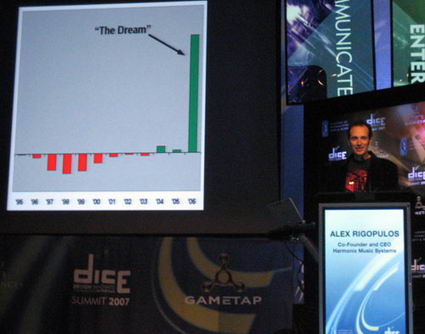
[Image courtesy of Jeff Atwood from Coding Horror]
Success is about a lot of things, but without perseverance none of them matter. Being smart really helps, but it doesn’t guarantee success. Many very brilliant people can’t successfully start companies, and many not so brilliant people have runaway successes. Luck can help, but it can’t stay with you forever. You can only be lucky for so long.
Honestly is there any other one single thing that can help you achieve success as consistently as perseverance? NO! Everything else, luck, money, intelligence, can help, but none of them will be as powerful as perseverance.
Learning to be successful takes time, effort, and energy. It’s the ability to keep on going through thick and thin. It’s the ability to not abandon when most other people would. It’s the ability to learn from your mistakes and continually improve. Or to use my favorite quote from Eddie Cantor “It takes 20 years to make an overnight success.”. I couldn’t agree more.
A great example of overcoming perseverance comes from the company Harmonix, makers of the wildly successful and famous video game Guitar Heroes. It took Harmonix 10 full years of development and improvements to build this series of games and achieve success. The graph at the top of this post really shows you the perseverance the folks at Harmonix had to keep pushing on. Sure they had revenues, but they also had negative profits. It would have been very easy to quit, but they kept on pushing.
If you ask most people today about the Guitar Heroes series, they’ve only learned about it in the last while with the release of Guitar Heroes 2. That’s when it really started to get some traction. And recently with Guitar Heroes 3 and Rock Band going mainstream, just about everyone knows about them. How many of you played, seen, or even heard of the original Guitar Heroes (version 1) game?
As a side note, Harmonix developed Guitar Heroes 2 for RedOctane, but not the latest Guitar Heroes 3 game. Without getting into the details, Harmonix was acquired by MTV in 2006, and as part of its first project it developed the other major competing game to Guitar Heroes 3 called Rock Band (Guitar Heroes 3 was developed for RedOctane by another company). Rock Band of course became a large success. A major part of their success with Rock Band was because of all the knowledge they had acquired over their years learning how to build Guitar Heroes, Dance Dance Revolutions, and so on. In other words, because of their perseverance. Perseverance really pays off!
I’ll give you another great example, my own company LandlordMax. If you look at the graph just above, it’s a 12 month moving average of our sales revenues (with the first 12 months missing to be able to get the first average). As you can see, we had almost no growth in 2005 according to this graph. Although I could’ve sworn we did, it tells me otherwise (a moving average graph acts as a way to smoothen the data points).
In other words, it basically took us two years to really get LandlordMax going. Sure it’s not nearly as long as ten years for Harmonix, but how many of you would keep at it for 2 years before seeing any significant growth? That’s with 3 major version releases (not counting the initial 1.00 release).
Perseverance is the key to success! It took us a while to get the “right” features into LandlordMax, to fully understand what our users really wanted. It took Harmonix many years to get the “right” music software, the “right” polish. Once they understood it though, it didn’t take them very long at all to create another completely new game (Rock Band) and achieve the same success with it. Learning how to succeed takes time and perseverance. It takes commitment and effort.
As the movie Run Fatboy Run asks, what will you do when you hit the “wall”? Will you push through it or give up and go home?
PS: If you haven’t already read it, I recommend reading Jeff’s somewhat related post Living the Dream: Rock Band. It’s about the importance of putting the user’s goals at the forefront of your business. And it’s also the inspiration that initiated this post.
Permalink to this article Discussions (6)
Status Update
Normally in the past I’ve posted updates about what we’re doing here at LandlordMax (as well as my other projects) every six months to a year. Well I’m now going to try to increase that frequency to every 2-3 months. I’m doing this because it forces me to look more frequently at our successes and failures in detail. I always do some checks each month, but by forcing myself to post about the more interesting metrics on a regular basis will force me to look deeper into these metrics. Hopefully finding some great nuggets of information along the way.
Firstly, the most exciting and good news is our traffic metrics at LandlordMax. Our traffic, as measured in by unique visitors, has increased by a whopping of 108% in the last 6 months!! That’s our biggest success as it is translating into more sales.
As well our revenue growth is continuing to be very positive, which is great to see. For those of you who are fairly new here, in early April I posted a graph of our sales revenues over the last few years. In that graph there was somewhat of a spike in 2008. I’m glad to report it wasn’t just a one-off spike for January and February, it’s a consistent growth in revenue. May is already looking like another very big month, possibly the biggest yet!
I decided to also push the data further and generate a moving average graph using a 12 month trailing period (which is why the first 12 months are missing from this graph). I have to admit I was surprised with the results, it’s much better than I expected! As you can see below, we’re definitely moving in the right direction. The real estate bust is not hampering our growth, so it’s not all bad news out there. It’s definitely not all doom and gloom for everyone as you can clearly see.
Some other interesting news, FollowSteph is still growing at a very good pace. In the last 6 months the traffic on this blog has grown by 46% which is great. Although I was hoping to more than double it every 6 months, I can’t complain with this growth rate. The good news is that the RSS feed subscription rate has grown much faster than that, it’s pretty doubled in the same amount of time.
As for the book Interview the Pros: What does it take to create a Successful Blog?, it’s still being edited by my publisher. These things take time, which I have to admit is excruiating for me. I like to have things moving, I’m not a big fan of waiting. But the good news is that the book already has it’s own official ISBN number assigned to it. And most of the book’s cover and back copy is ready to go. It’s going to be available in both as a soft and hard cover book. I’ll let you all know as soon as the editing phase is done, which hopefully will be sooner than later. As well I have to finish the website for the book pretty soon, so I can start to do some pre-marketing. I’ll let you all know when the website is available.
As for the ebook I wrote How to Generate Traffic to Your Website it’s done fairly well overall. I have to admit I was hoping for better results, but this topic seems to be saturated with lower quality ebooks. In other words a lot of people are suspicious of all books on this topic because of some bad experiences, so you really have to push hard to make the sale which isn’t really where I want to be (I don’t want to compete with the long spammy sales letters). However what’s been really interested is that ALL the reviews it’s gotten have been favorable! And each time a review came out there was definitely a spike in sales. But between reviews it’s pretty quiet. So I’m looking into what are my options for the future of this ebook…
Otherwise everything else is moving along very well. The biggest item is that we’re always working very hard on releasing the next major version of LandlordMax as soon as possible, which is coming together very nicely. Just extremely busy as usual.
Permalink to this article Discussions (6)
| « PREVIOUS PAGE | NEXT PAGE » |

